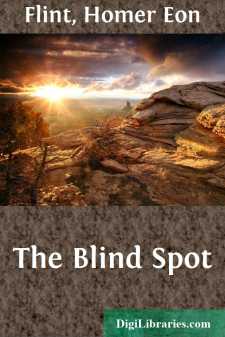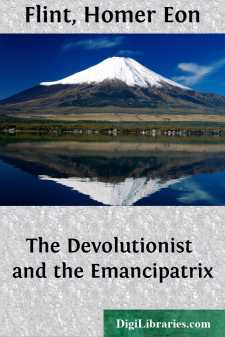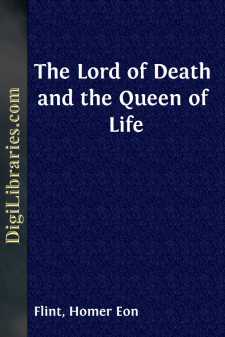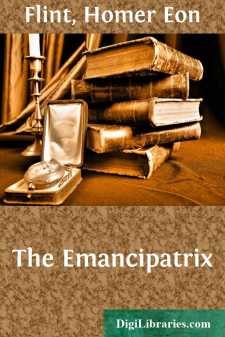Categories
- Antiques & Collectibles 13
- Architecture 36
- Art 48
- Bibles 22
- Biography & Autobiography 813
- Body, Mind & Spirit 142
- Business & Economics 28
- Children's Books 17
- Children's Fiction 14
- Computers 4
- Cooking 94
- Crafts & Hobbies 4
- Drama 346
- Education 46
- Family & Relationships 57
- Fiction 11829
- Games 19
- Gardening 17
- Health & Fitness 34
- History 1377
- House & Home 1
- Humor 147
- Juvenile Fiction 1873
- Juvenile Nonfiction 202
- Language Arts & Disciplines 88
- Law 16
- Literary Collections 686
- Literary Criticism 179
- Mathematics 13
- Medical 41
- Music 40
- Nature 179
- Non-Classifiable 1768
- Performing Arts 7
- Periodicals 1453
- Philosophy 64
- Photography 2
- Poetry 896
- Political Science 203
- Psychology 42
- Reference 154
- Religion 513
- Science 126
- Self-Help 84
- Social Science 81
- Sports & Recreation 34
- Study Aids 3
- Technology & Engineering 59
- Transportation 23
- Travel 463
- True Crime 29
The Blind Spot
by: Homer Eon Flint
Description:
Excerpt
The Blind Spot opens with the words: "Perhaps it were just as well to start at the beginning. A mere matter of news." Suppose I use them in the same sense:
A mere matter of news: The first instalment of this fabulous novel was featured in Argosy-All-Story-Weekly for May 14, 1921. Described as a "different" serial, it was introduced by a cover by Modest Stein. In the foreground was the profile of a girl of another dimension—ethereal, sensuous, the eternal feminine—the Nervina of the story. Filmy crystalline earrings swept back over her bare shoulders. Dominating the background was a huge flaming yellow ball, like our Sun as seen from the hypothetical Vulcan— splotched with murky, mysterious globii vitonae. There was an ancient quay, and emerging from the ultramarine waters about it a silhouetted metropolis of spires, domes, and minarets. It was 1921, and that generation thus received its first glimpse of the alien landscape of The Blind Spot and the baroque beauty of an immortal woman of fantasy fiction.
The authors? Homer Eon Flint was already a reigning favourite with post-World-War-I enthusiasts of imaginative literature, who had eagerly devoured his QUEEN OF LIFE and LORD OF DEATH, his KING OF CONSERVE ISLAND and THE PLANETEER. Austin Hall was well known and popular for his ALMOST IMMORTAL, REBEL SOUL, and INTO THE INFINITE.
Then came this epoch-making collaboration. When Mary Gnaedinger launched Famous Fantastic Mysteries magazine she early presented THE BLIND SPOT, and printed it again in that magazine's companion Fantastic Novels. These reprints are now collectors' items, almost unobtainable, and otherwise the story has long been out of print. Rumour says an unauthorised German version of THE BLIND SPOT, has been published in book form. There is another book called THE BLIND SPOT, and also a magazine story, and a major movie studio was to produce a film of the same title. However, here is presented the only hard-cover version of the only BLIND SPOT of consequence to lovers of fantasy.
Who wrote the story? When I first looked into the question, as a 15 year old boy, Homer Eon Flint (he originally spelled his name with a "d") was already dead of a fall into a canyon. In 1949 his widow told me: "I think Homer's father contributed that middle name"—the same name (with slightly different spelling) that the Irish poet George Russell took as his pen-name, which became known by its abbreviation AE. Mrs. Flindt said of Flint's father: "He was a very deep thinker, and enjoyed reading heavy material." Like father, like son. "Homer always talked over his ideas with me, and although I couldn't always follow his thoughts it seemed to help him to express them to another—it made some things come more clearly to him."
Flint was a great admirer of H. G. Wells (this little grandmother- schoolteacher told me) and had probably read all his works up to the time when he (Flint) died in 1924. He had read Doyle and Haggard, but: "Wells was his favourite—the real thinker."
Flint found a fellow-thinker in Austin Hall, whom he met in San Jose, California, while working at a shop where shoes were repaired electrically—"a rather new concept at the time." Hall, learning that Flint lived in the same city, sought him out, and they became fast friends....





